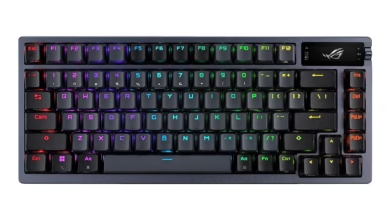Mini Crossword: A Small Puzzle with Big Impact

In the age of short attention spans and endless scrolling, one tiny game has carved out a space in the daily routines of millions: the mini crossword. It’s compact, clever, and takes just a few minutes to solve—yet somehow, it manages to be surprisingly addictive and intellectually satisfying.
While full-sized crosswords might seem intimidating or time-consuming, the mini crossword offers a friendlier, more approachable alternative. But don’t let the size fool you—it still packs a mental punch. Whether you’re solving it over your morning coffee or sneaking it in during a work break, the mini crossword has become a staple in the lives of casual puzzlers and word nerds alike.
So, what exactly is a mini crossword? Where did it come from, and why is it so popular? Let’s dig into the history, appeal, and secrets behind this small but mighty puzzle.
What Is a Mini Crossword, Exactly?
At its core, a mini crossword is a bite-sized version of the traditional crossword puzzle. While standard puzzles often span 15×15 grids and take 30 minutes or more to complete, mini crosswords are usually just 5×5 or 7×7 and take less than five minutes—perfect for a quick mental workout.
The Format That Keeps Things Simple
The mini crossword format typically includes a handful of across and down clues, ranging from pop culture references to wordplay and general knowledge. The smaller grid means fewer clues and less time, but it also leaves little room for error. You’ve got to think fast and think smart.
Unlike larger puzzles, which often have tricky themed entries and wordplay-heavy clues, mini crosswords tend to be more straightforward. They’re designed to be quick but clever, appealing to both beginners and seasoned solvers who want a warm-up.
A Gateway to the World of Puzzling
One of the greatest strengths of the mini crossword is its accessibility. It doesn’t require a dictionary on hand or decades of trivia knowledge. Anyone can jump in—whether you’re 14 or 84. It’s a fantastic entry point for people who have always been curious about crossword puzzles but didn’t know where to start.
Because they’re so easy to pick up, mini crosswords have played a big role in introducing crossword culture to a younger and more diverse audience, breaking the stereotype that puzzles are only for older folks or academic types.
The Rise of the New York Times Mini Crossword
Perhaps the most famous version is the New York Times Mini Crossword, launched in 2014 and quickly gaining popularity. Edited by Joel Fagliano, the NYT mini became an overnight hit due to its smart cluing and high quality. It’s now a daily ritual for hundreds of thousands of players around the globe.
Available on both web and mobile, the NYT mini offers a seamless, user-friendly interface, making it even easier to become part of your daily routine. And let’s be real—it’s satisfying to start your day with a tiny win.
Why Are Mini Crosswords So Addictive?
If you’ve ever solved one, you know: mini crosswords can be surprisingly hard to put down. What makes these little puzzles so compelling?
Quick Wins, Big Satisfaction
We live in a world driven by dopamine hits—scrolling social media, watching short-form videos, and checking off to-do lists. The mini crossword taps into that same psychology. Solving a puzzle in two or three minutes gives you an instant sense of accomplishment.
You feel smart. You feel efficient. It’s a mini mental high. And that’s addictive.
The Challenge-to-Reward Ratio
Mini crosswords offer the perfect balance of challenge and ease. They’re not so difficult that you give up, but they’re not so easy that you breeze through them without thinking. This sweet spot keeps your brain engaged and makes you want to come back for more.
And let’s not forget the element of surprise—no two puzzles are ever the same. You never know if you’ll get pop culture, science, puns, or even a sneaky geography clue. It keeps things fresh and exciting.
Community and Competition
Mini crosswords also appeal to our competitive side. Thanks to leaderboards and social sharing features, many players try to beat their own times—or even those of their friends. It’s all in good fun, but it adds a layer of friendly pressure that keeps people coming back.
Some solvers even post their times on social media daily, creating a mini crossword subculture where fans bond over clever clues and frustratingly tricky entries.
Tips and Tricks to Master the Mini Crossword
You don’t have to be a wordsmith or trivia buff to get better at mini crosswords. Like any skill, it just takes a bit of strategy and consistency.
Start with the Givens
Every puzzle has an entry point. Look for the obvious answers—the clues that are so easy, you don’t even have to think. These “gimmes” help unlock letters for the surrounding words, giving you momentum.
Filling in the shorter words first (like 3- or 4-letter answers) is a great way to make progress early and reduce the number of unknowns quickly.
Think Outside the Literal
Mini crossword clues love to play with double meanings and wordplay. If a clue doesn’t make sense literally, try thinking about it in a different way. For example, a clue like “It goes up and down” might be referring to an elevator—not a mood.
Staying flexible and open-minded is key to cracking clever or tricky clues. The best solvers often pause and revisit confusing clues after filling in more of the grid.
Build a Mental Toolbox
The more you solve, the more you start to recognize patterns. There are common clues that pop up over and over—like “Opposite of yes” for NO or “To be, in French” for ETRE. Building this mental database of crossword staples can help you move faster and feel more confident over time.
And don’t be afraid to learn from your mistakes! Checking the answers and understanding what you missed is one of the fastest ways to improve.
The Mini Crossword in Education and Brain Health
Beyond being fun and addictive, mini crosswords also serve a deeper purpose—they’re actually good for your brain.
Boosting Cognitive Function
Mini crosswords challenge your memory, vocabulary, and pattern recognition. Solving them regularly helps keep your brain agile, improves concentration, and even enhances your problem-solving skills. Think of it as a mental gym, minus the sweaty workout gear.
Some studies even suggest that regular puzzle-solving may delay cognitive decline in older adults. So, playing the mini crossword might not just be fun—it might actually be an investment in your long-term brain health.
A Classroom and Teaching Tool
Educators are starting to catch on to the power of the mini crossword, too. Teachers use them to reinforce vocabulary, improve spelling, and enhance reading comprehension. Because they’re short and engaging, they fit perfectly into classroom warm-ups or homework assignments.
Plus, solving puzzles in groups can promote collaboration and critical thinking. They’re not just a solo activity—they’re a great way to bring students together in a fun and educational way.
Stress Relief and Mental Health
Puzzles like the mini crossword also provide a mental break. Engaging with something that requires focus can help reduce anxiety and bring your mind into the present. It’s a form of mindfulness in disguise.
If you’ve had a stressful day, solving a mini crossword might be the mental reset you didn’t know you needed.
Final Thoughts: Small Puzzle, Big Potential
In a world that’s constantly demanding more of our time and energy, the mini crossword stands out as a small joy—a quick, rewarding break that exercises your brain without overwhelming it. It’s fast, fun, and fantastically satisfying.
Whether you’re solving one in the NYT app, over a coffee break, or even using it as a teaching tool, the mini crossword proves that good things really do come in small packages.
So the next time you’ve got five minutes to spare, skip the mindless scrolling and try a mini crossword instead. You might just find yourself hooked—and better for it.



